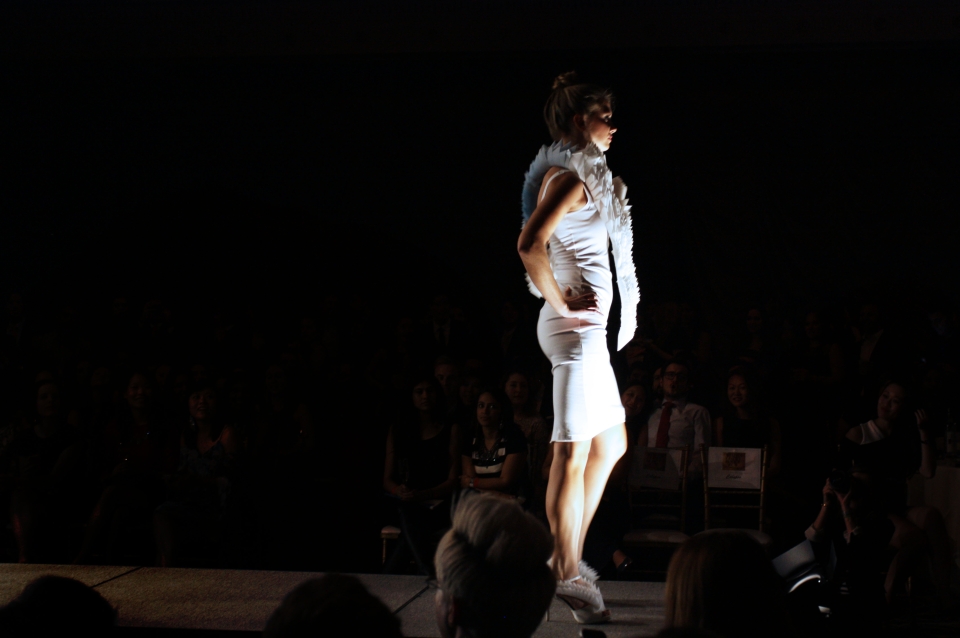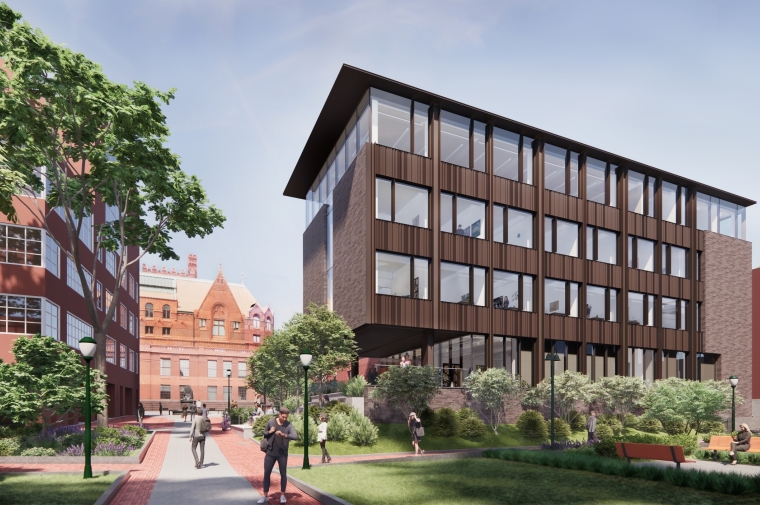April 15, 2015
Stuart Weitzman School of Design
102 Meyerson Hall
210 South 34th Street
Philadelphia, PA 19104
Get the latest Weitzman news in your Inbox
Media Contact
Michael Grant
mrgrant@design.upenn.edu
215.898.2539
On the evening of Thursday, April 09, 2015, the Crystal Tea Room in the historic Wanamaker Building--Philadelphia’s first department store--transformed into a catwalk for Wharton’s Spring Charity Fashion Show.
The show, an annual student-run event that features world-class designers and raises funds for a local Philadelphia Charity, is run and staffed by volunteers and students from the Wharton student body. One hundred percent of this year’s proceeds will go to YouthBuild Philadelphia, a second chance program for inner-city high school dropouts aged 18-21, who have aged out of the public school system.
A group of twelve PennDesign students topped off the first half of a stunning show. The fashion-forward ensemble they created was composed of aggregated Mylar triangular units, which were stitched and glued together to provide structural support as well as flexible movement on the runway. The piece was inspired by designers such as Iris van Herpen, whose cutting edge creations focus on emerging materials, textures and technologies.
The concept piece modeled in the show, which consists of a vest, bracelet and shoe detail, uses a simple seven-fold origami unit called "Golden Venture Folding." The units naturally aggregated in a curvilinear fashion and conformed to the model’s body while making a gestural statement with vertically stacked triangular units. When nested within themselves as a vest, these units grew in scale and collected at the shoulders. From front to back, their color gradient shifted from translucent white to sky blue, creating a dynamic form striking the audience each time the model posed and changed directions.
The statement piece was worn on top of a simple, form-fitting white dress while the shoe detail and bracelet served to enhance the visual narrative. To ensure the success of our efforts, the designers met with the model and tailored the design for her comfort.
With limited resources and a seven day timeframe, the team shifted between group meetings and individual experimentation, which allowed for an iterative design process. They categorized the process into four main production phases: printing, cutting, folding and assembling. To keep the system moving in an efficient manner, each member was designated with either printing or cutting the origami units and distributing them among the group to fold. The designers then collaborated on multiple stages in the process to assemble and modify the design. Although the pieces were produced at different times, the logic was cohesive and allowed for both individual input and teamwork.
Project Design Manager Jessilyn Brown, MArch/Urban Redevelopment Candidate called the show "a unique opportunity for PennDesign to take part in an initiative outside its department and apply knowledge of architecture to another design field," reporting that the team received encouraging feedback and an invitation to participate in future years.
The design was led by M.Arch Candidates Benita Trenk, Olga Karabinech, Mia Landsbergis, Kevin Chan and Pingle Li. Fabrication was led by Roni Gerner, MEBD Candidate, Elizabeth Bland, MArch/CPLN Candidate and Tanuja Manohar, MArch Candidate and supported by photographer Alex Chin, MArch/MLA Candidate.


 View Slideshow
View Slideshow


